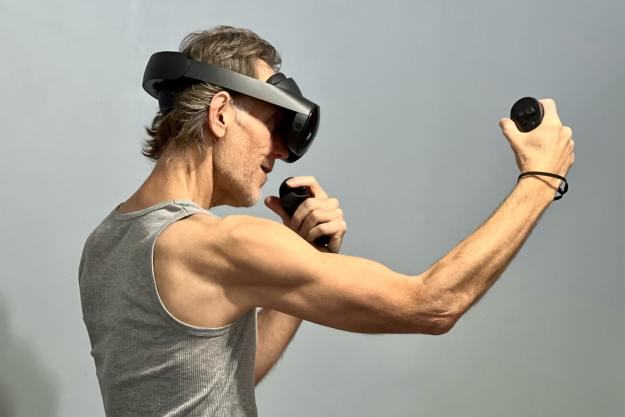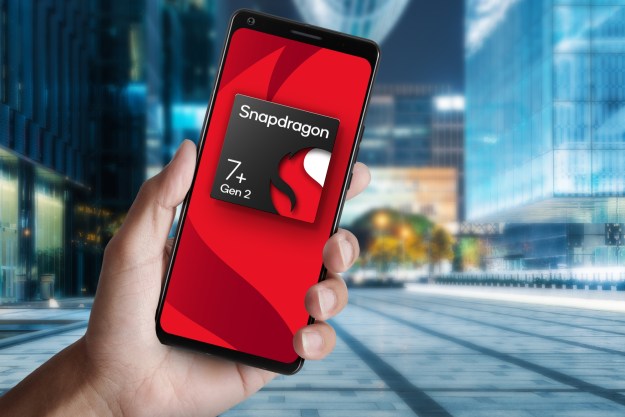When you think virtual reality, you almost certainly don’t think of Qualcomm. In fact, if you’re like most consumers, you likely don’t think about Qualcomm much at all … ever. But you maybe should, as the company has more or less become the Intel of smartphones. There’s a good chance your phone has a Qualcomm processor inside it. Its hardware is popular, and well respected.
Now – in a move that makes parallels with Intel even stronger – Qualcomm has debuted its very own VR headset. Yes, I know what you’re thinking. Another one? But this one, officially called the Snapdragon VR820, has a trick. It has two front-mounted cameras that enable spatial tracking and gesture recognition, all without external sensors or hardware. In fact, it has no hardware at all.
Sound familiar? That might be because Intel just announced Project Alloy, which promises exactly the same thing. On a technical level, Intel’s kit seems a bit more powerful. But unlike Project Alloy, the Snapdragon VR820 was available to try, and should be shipping (to Qualcomm partners) within two months.
How well did it work? Quite well, at least in the basic demo the company showed us. We encountered a friendly squid and moved around it in real space, without any controller, or cords of any kind. We saw absolutely no errors in tracking or lag, which made the headset very comfortable to use. Better still, the display boasts 4K resolution, which means it actually looks sharper than the HTC Vive or Oculus Rift — substantially sharper.
The demo shown was limited, noninteractive, and didn’t showcase potential gesture support, so we have to stop short of declaring Qualcomm’s tech awesome. And the headset itself was one you might expect from something that’s called a “reference design” – it felt cheap and bulky.
Still, to Qualcomm’s credit, the conditions weren’t optimal. The area we used the headset wasn’t the empty, controlled room you usually see in VR demonstrations, but instead a press room full of journalists standing within arm’s reach. Despite that, the tracking worked without flaw, which seems to indicate it can handle chaotic environments.
To be clear, this is not a design meant for consumer hands. It’s instead built to inspire engineers and developers by showing them what Qualcomm can do. The hope is that, once convinced, they’ll decide to opt for the company’s hardware. Qualcomm wants to be a part of the blooming VR market, and this is it’s in.
What we saw indicates there’s reason for Qualcomm to be hopeful. There’s no way a self-contained, mobile-oriented VR headset like this will ever replace premium headsets like the Vive and Rift. It’s just not powerful enough. But self-contained designs like this could revolutionize entry-level VR headsets which, at the moment, are restricted to seated experiences and rudimentary controls. A design like the Snapdragon VR820 could change that — and suddenly make affordable VR relevant.
Highs
- 4K display looks crisp
- Excellent spatial tracking
- Completely wire-free
Lows
- Demo was simple
- Only meant for reference use
Editors' Recommendations
- This new VR headset beats the Vision Pro in one key way and is half the price
- Disney just reinvented the VR treadmill, and it looks amazing
- I tried an insane one-handed keyboard, and I actually liked it
- The Apple Vision Pro has given VR its iPhone moment
- Leak reveals how Apple VR headset’s hand tracking may work




